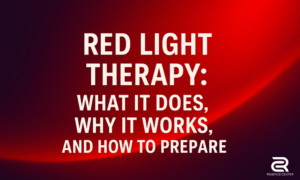What is Exercise With Oxygen Therapy and Why You Want to Use EWOT
Two modalities stand out in oxygen therapy: Exercise with Oxygen Therapy (EWOT) and Hyperbaric Oxygen Therapy (HBOT). While both offer similar benefits, they differ significantly in cost, accessibility, and user experience.
1. Cost and Accessibility
- EWOT therapy emerges as the more cost-effective option, offering a budget-friendly alternative to HBOT. Unlike HBOT, which often requires medically supervised sessions lasting 90 minutes in a specialized chamber, EWOT can be safely performed in the comfort of your own home. This accessibility makes EWOT a practical choice for individuals seeking regular oxygen therapy without the hefty price tag associated with HBOT sessions.
2. Time Commitment
- One of the most significant differences between EWOT and HBOT is the time commitment required for each session. HBOT sessions typically last 90 minutes and may need to be repeated 5-6 times weekly over several weeks to achieve optimal results. In contrast, EWOT sessions are shorter, lasting approximately 15 minutes. This shorter duration and the convenience of home-based therapy make EWOT a more time-efficient option for individuals with busy schedules.
3. User Experience
- Another crucial aspect to consider is the user experience associated with each therapy. HBOT involves being enclosed in a pressurized chamber for the duration of the session, which can induce feelings of claustrophobia and anxiety in some individuals. In contrast, EWOT replaces the need for a pressurized chamber with exercise, harnessing the natural pumping action of the heart to enhance oxygen delivery to tissues. This method not only eliminates the discomfort associated with confined spaces but also promotes cardiovascular health through exercise.
4. Mechanism of Action
- While both therapies aim to increase oxygen levels in the body, they achieve this through different mechanisms. HBOT relies on pressurization to force oxygen into tissues, whereas EWOT enhances oxygen uptake through exercise-induced vasodilation. During EWOT, the heart pumps harder during exercise, leading to dilation of blood vessels and increased oxygen delivery to tissues. Additionally, the body’s oxygen consumption is significantly higher during exercise compared to rest, allowing for a more efficient delivery of oxygen-rich blood to tissues.
5. Practical Considerations
- When choosing between EWOT and HBOT, practical considerations such as cost, time commitment, and user experience play a significant role. While HBOT may offer certain advantages for specific medical conditions, EWOT presents a more accessible and convenient option for individuals seeking regular oxygen therapy. By integrating exercise with oxygen delivery, EWOT offers a holistic approach to wellness, promoting cardiovascular health and enhancing the oxygenation of tissues.
In conclusion, both EWOT and HBOT offer valuable therapeutic benefits, but their differences in cost, accessibility, and user experience make them suitable for different individuals and scenarios. Ultimately, the choice between EWOT and HBOT depends on whether or not you have money to burn (in the event of using a Hyperbaric chamber for daily recovery), personal preferences, medical needs or physical limitations, and lifestyle considerations.
At Regenus Center, we use EWOT (exercise with oxygen therapy) instead of HBOT (hyperbaric chamber) because we are a recovery facility. Clients typically have time constraints, and many people generally cannot afford the average $100-150 cost per session for a hyperbaric chamber used in a general recovery capacity.
EWOT and HBOT share striking similarities in terms of the benefits they offer. However, EWOT holds distinct advantages in affordability, time efficiency, and convenience, making it a preferable choice for many individuals seeking oxygen therapy for recovery.
To experience HBOT’s full benefits, individuals typically undergo 90-minute sessions in a specialized chamber under medical supervision. This regimen often involves frequent sessions, sometimes up to 5-6 times per week over several weeks, incurring significant costs ranging from $100-150 per session and, in many cases, more.
HBOT sessions involve a pump to create high pressure, forcibly driving oxygen into the body’s tissues within the enclosed, pressurized chamber. Many individuals find the confined space of the chamber unsettling, experiencing sensations of claustrophobia and anxiety during treatment. Despite claims that oxygen saturation in the tissues lasts longer from the hyperbaric chamber, simple cost-benefit analysis renders that “benefit” more marketing and an actual tangible benefit.
In contrast, EWOT offers a more natural and accessible approach by harnessing the power of the heart and exercise. During EWOT sessions, the increased heart rate and expanded blood vessels resulting from exercise facilitate the efficient delivery of oxygen to tissues throughout the body. This process optimizes oxygen distribution, reaching areas that may be otherwise inaccessible. Moreover, the heightened oxygen demand during exercise allows for shorter session durations, typically lasting only 15 minutes compared to the 90 minutes required for HBOT.
Overall, while both therapies offer valuable oxygenation benefits, EWOT emerges as a cost-effective, time-efficient, and comfortable alternative to traditional HBOT, aligning with modern preferences for holistic health practices.
In essence, unless you’re dealing with specific medical conditions like severe burns, decompression sickness, or traumatic brain injuries or have physical limitations hindering movement, investing in hyperbaric oxygen therapy (HBOT) for general recovery may not be the wisest use of resources. Instead, exercising with oxygen therapy (EWOT) emerges as a more practical and efficient approach. We firmly believe in practical, sustainable recovery practices that don’t break the bank. Consistency is key, and unlike HBOT, EWOT offers a solution that can be incorporated into daily routines for ongoing benefits.






